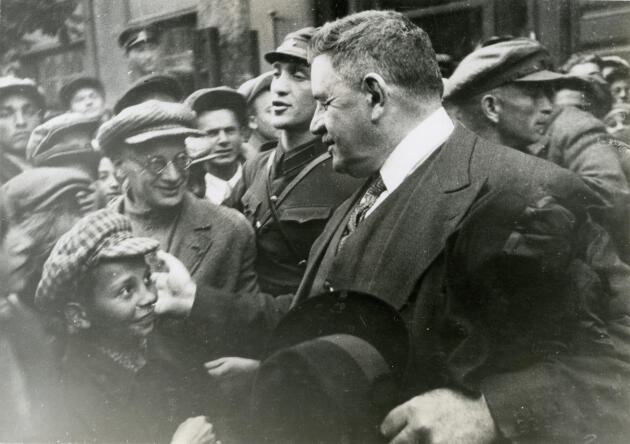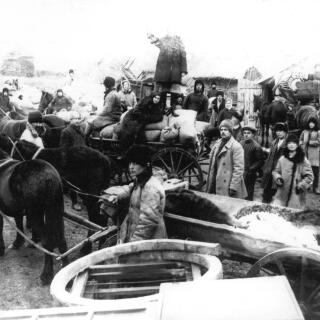There was a large crowd at the Brotteaux train station to welcome Edouard Herriot to his city. On September 13, 1933, the irremovable mayor of Lyon and leader of the left-wing Parti Radical and former president of the Council (an equivalent to prime minister), was returning from an unusual trip. A few days earlier, he had crossed the USSR from Odesa to the Baltic sea at the invitation of the Soviet government. It was the first time since the 1917 October Revolution that a political leader of this stature had the opportunity to visit the homeland of communism, a land on which worrying rumors had been circulating for months.
As soon as he got off the train, he was asked the question on everyone's lips: Was there a famine in Ukraine? Mr. Herriot's answer was anything but spontaneous: "I have crossed Ukraine. Well, I assure you that I saw it as a garden in full yield, a beautiful garden with black and fertile grounds covered on considerable expanses by magnificent harvests. You will tell me that they say this region is going through sad times. I cannot speak of what I have not seen. But I asked to be taken to places that were said to be suffering. Yet I saw only prosperity."
French obliviousness
In his book Everything Flows, the great Soviet writer Vassili Grossman makes a devastating allusion to this episode: "One day, I remember, an old man brought the president of the kolkhoz a fragment of newspaper, which he had picked up on the way. A Frenchman came to us, a well-known minister, and he had been taken to the region of Dnipropetrovsk, where there was the most appalling famine, a famine even worse than ours. Over there, men ate men. So the minister was taken to a village, to the kolkhoz's child play area, and there he asked: 'What did you eat for lunch?' And the children answered, 'Chicken broth, pirozhki, and rice croquettes.' To think I read this with my own eyes. That fragment of newspaper, I can still see it. What even is this? Killing millions of people in cold blood and abusing, deceiving the entire world! Chicken broth they wrote! Kibbles! When they were eating earthworms..."

Edouard Herriot stayed in the USSR for two weeks, including five days in Ukraine (August 26-30, 1933). Despite three to five million people having died of starvation in the previous months, he claimed to have seen nothing. In a meticulous and damning investigation (Le Voyage de monsieur Herriot, "Mister Herriot's Trip"), historian Iryna Dmytrychyn highlighted the resources used by Stalin to conceal the tragedy, as well as the amount of obliviousness it took for the Frenchman to accept, in the name of state policy, to look the other way when what he saw did not fit the official narrative. The streets of the cities were "cleaned" of corpses and all traces of misery, the stores suddenly full of products, the hotels hastily repainted (to the point that the smell bothered the visitors)... Nothing was missing, and the pinnacle was reached in Kyiv when Mr. Herriot entered the Saint Sophia cathedral as a mass was underway: "It is Sunday. The old archbishop, in a gold garment bordered with red, motionless, (...) presides impassively over the ceremony, while chants rise, followed with reverence by some poor women under dark arcades," he described later, still enraptured by the scene.
You have 78.91% of this article left to read. The rest is for subscribers only.
